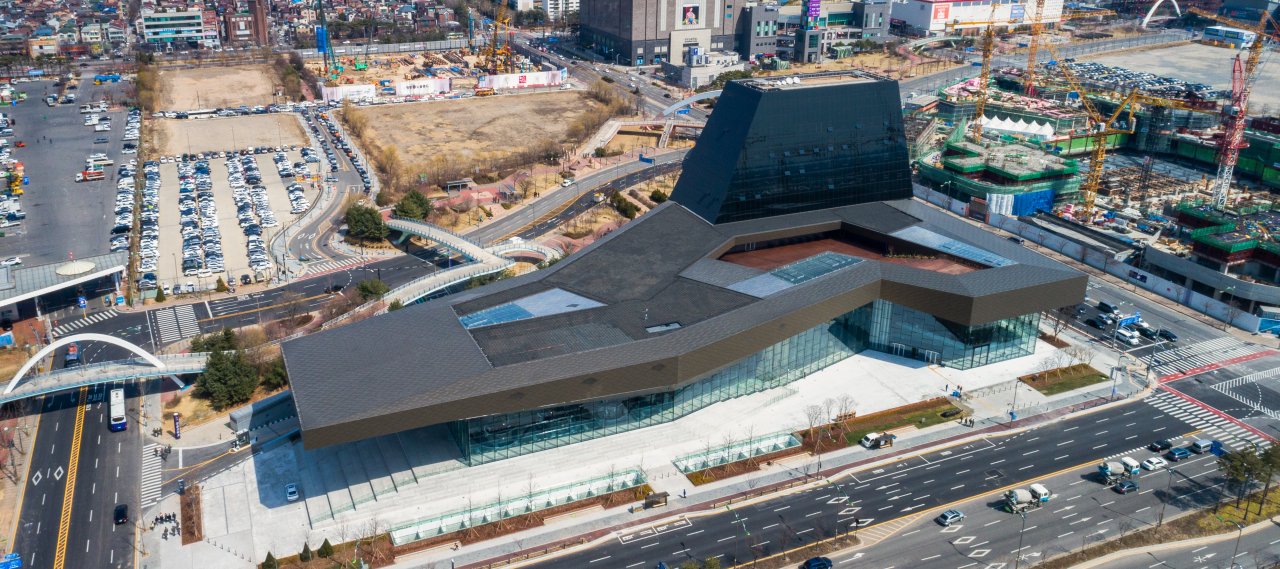
| City, Country | Seoul, South Korea | |
| Year | 2012–2017 | |
| Client | Hyundai Motor Company | |
| Architect | Delugan Meissl Associated Architects | |
| Services | Structural Engineering Façade Engineering |
|
| Facts | GFA: 63,860 m² | Height: 49.4 m | Surface area glazed façade: 8,400 m² | Surface area metal façade: 13,000 m² | Level: 14 | Total site: 16,719 m² | Competition: 2011, 1st Prize | |
Hyundai Motorstudio in Goyang is the largest mobility theme park in South Korea. The building is differentiated between an above-ground part with mostly irregular geometry (shaped sky) and an underground part constituting a regular grid.
The support for the shaped sky, 160 m long and 75 m on its broadest end, combines four concrete cores and six steel column clusters with quantity, size, and position computationally optimised. A giant cantilever spans 25 m over the last column cluster with an average height above ground of 20 m. The complex load-bearing behaviour and numerous architectural constraints for the in-placement of columns required advanced algorithmic optimisation technology for achieving structural efficiency.
A prominent feature is the 13 m high exhibition glass façade with insulated glazing units with staggered horizontal joints connected over two sides through a structural silicon joint to vertical steel-glass fins. The vertical fins hang from the roof structure with the slim steel elements transferring the façade dead load while the 4-ply laminated glass braces against lateral wind loads. A similar façade support system is utilised for three large, glazed atriums; the structure of these geometrically complex volumes was analysed three-dimensionally to optimise the design. The façade of the 50 m high office tower is a unitised curtain wall façade, and the entire roof structure is covered in wavelike metal sheets.

















